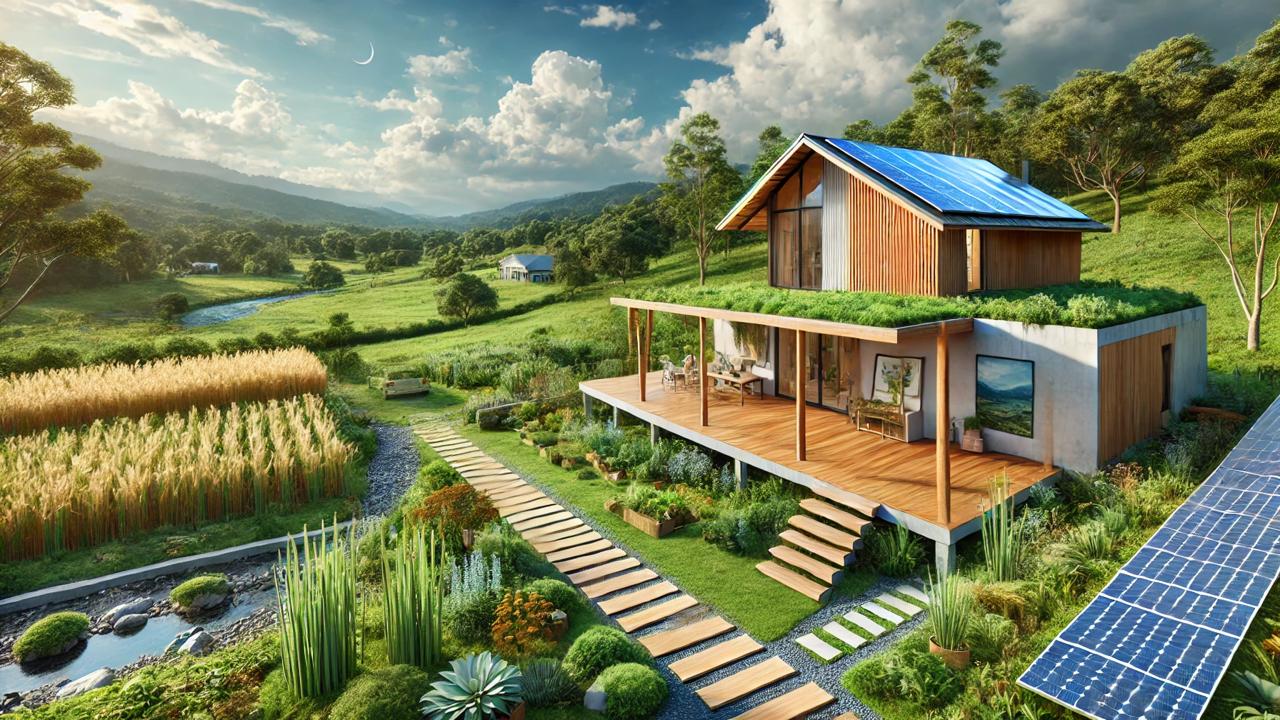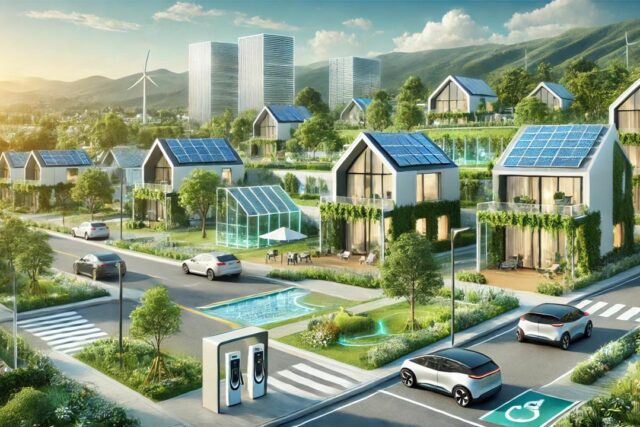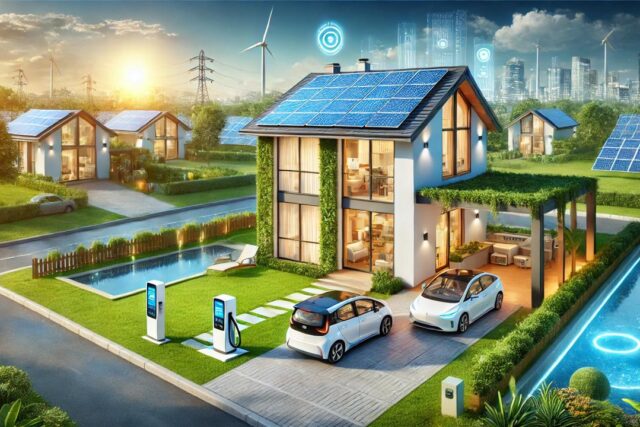
Building a home with sustainability in mind is becoming a priority for many homeowners and developers. As climate change concerns grow, the demand for eco-friendly building materials is on the rise. Choosing the right materials can reduce a home’s carbon footprint, improve energy efficiency, and create a healthier living environment.
This article explores some of the top eco-friendly building materials that make homes both sustainable and stylish.
1. Reclaimed Wood: A Sustainable Choice
Reclaimed wood is one of the most sustainable materials available for home construction. Sourced from old buildings, barns, and factories, it reduces the need for newly harvested timber. The advantages of using reclaimed wood in building include its unique aesthetic appeal, durability, and environmental benefits. This material helps reduce deforestation and minimizes waste by repurposing wood that would otherwise be discarded.
In addition to being eco-friendly, reclaimed wood adds character to homes. Its natural aging process gives it a distinctive charm that new wood often lacks. Homeowners can use it for flooring, wall paneling, and furniture to create a warm and inviting atmosphere.
2. Bamboo Flooring: A Renewable Alternative
Bamboo has gained popularity as a sustainable flooring option due to its rapid growth rate and durability. The benefits of bamboo flooring in sustainable homes include its renewability, strength, and low environmental impact. Unlike hardwood trees that take decades to mature, bamboo reaches full growth in just five to seven years. This makes it an excellent alternative to traditional wood flooring.
Additionally, bamboo is naturally resistant to pests and moisture, making it a durable choice for homes in various climates. With its sleek and modern appearance, bamboo flooring enhances interior design while promoting sustainability.
3. Recycled Steel: Strong and Eco-Friendly
Steel is widely used in construction, but traditional steel production has a high environmental impact. Recycled steel, however, offers a sustainable alternative. It requires significantly less energy to produce compared to new steel, reducing greenhouse gas emissions.
Recycled steel is highly durable and can be used for framing, roofing, and structural supports. Since it does not warp, shrink, or crack like wood, it enhances the longevity of a home. Additionally, using recycled steel helps reduce waste in landfills, making it an excellent choice for eco-friendly building projects.
4. Cork: A Renewable and Versatile Material
Cork is another outstanding eco-friendly building material that is both renewable and biodegradable. Harvested from the bark of cork oak trees, the process does not harm the trees, allowing them to continue growing. Cork is an excellent insulator, providing thermal and acoustic benefits to homes.
Cork flooring, wall coverings, and insulation panels are becoming increasingly popular in sustainable home design. It is also hypoallergenic, antimicrobial, and resistant to mold and mildew, making it a healthier option for indoor spaces.
5. Hempcrete: A Natural Insulation Solution
Hempcrete, a mixture of hemp fibers, lime, and water, is an eco-friendly alternative to traditional concrete. It provides excellent insulation, regulating indoor temperatures and reducing energy consumption. Hempcrete is also breathable, allowing moisture to escape and preventing mold growth.
This material is lightweight yet durable and absorbs carbon dioxide over time, further reducing a home’s carbon footprint. Builders are increasingly adopting hempcrete in walls, insulation, and flooring to enhance sustainability.
6. Solar Panels: Harnessing Renewable Energy
While not a building material in itself, solar panels are an essential component of eco-friendly homes. They convert sunlight into electricity, reducing reliance on fossil fuels. Modern solar technology has become more affordable and efficient, making it accessible to homeowners looking to lower their energy bills.
Solar panels can be integrated into roofs, walls, or standalone structures to maximize energy production. With government incentives and rebates available in many regions, investing in solar energy is both environmentally and financially beneficial.
7. Recycled Glass: Stylish and Sustainable
Recycled glass is a beautiful and sustainable material that can be used in countertops, tiles, and decorative elements. It is made from discarded glass bottles and windows, preventing waste from ending up in landfills.
Glass tiles and countertops made from recycled materials are durable, easy to maintain, and available in various colors and patterns. This makes them a stylish addition to eco-friendly homes while promoting resource conservation.
8. Rammed Earth: An Ancient Technique with Modern Benefits
Rammed earth construction involves compacting natural materials like clay, sand, and gravel to create sturdy walls. This technique has been used for centuries and is now making a comeback due to its sustainability and durability.
Rammed earth walls have excellent thermal mass, regulating indoor temperatures and reducing the need for heating and cooling. They are also fire-resistant, non-toxic, and long-lasting, making them an ideal choice for eco-friendly building projects.
9. Straw Bales: Affordable and Insulating
Straw bales offer a natural and energy-efficient alternative for wall construction. They provide excellent insulation, keeping homes warm in winter and cool in summer. Straw bales are also biodegradable, renewable, and widely available.
By using straw bales, builders can reduce reliance on traditional insulation materials, which often contain harmful chemicals. This material is particularly beneficial for those looking to construct low-impact, eco-friendly homes.
10. Green Roofs: A Living, Breathing Solution
Green roofs, also known as living roofs, involve covering rooftops with vegetation. These roofs help regulate indoor temperatures, improve air quality, and absorb rainwater, reducing stormwater runoff.
In addition to their environmental benefits, green roofs enhance the aesthetic appeal of homes. They provide natural insulation, reducing energy costs while promoting biodiversity in urban areas. Homeowners can even grow edible plants, creating a functional and beautiful outdoor space.
Conclusion
Building a sustainable home requires thoughtful material choices that minimize environmental impact while maximizing energy efficiency. From reclaimed wood and bamboo flooring to recycled steel and solar panels, there are numerous eco-friendly building materials available today. Each material offers unique benefits, contributing to a greener and healthier living environment.
By prioritizing sustainability, homeowners can reduce their carbon footprint, save money on energy bills, and create durable, stylish homes. As eco-friendly building practices continue to evolve, the future of home construction looks more sustainable than ever






Leave a Reply
You must be logged in to post a comment.